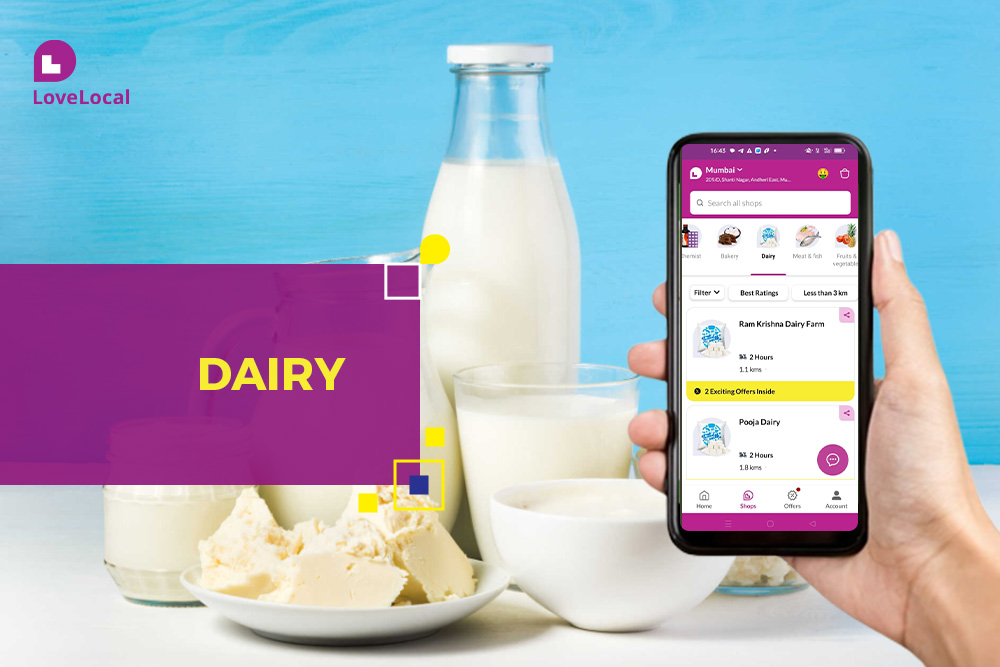Milk is one of the most versatile and nutrient-rich foods available, serving as the foundation for a variety of delicious and essential dairy products. From the daily glass of milk to a scoop of creamy ice cream, milk and milk products play a significant role in our diets. This article will explore the different types of milk products, including milk, cheese, yogurt, ice cream, and butter, and how they can be used in various ways.
Milk: The Foundation of Dairy Products
Milk is the primary ingredient in a vast array of dairy products. It is rich in calcium, vitamins, and proteins, making it a crucial component of a balanced diet. Whether enjoyed as a refreshing drink or used as a base for other dairy milk products, milk’s versatility is unmatched. It’s the starting point for countless milk dairy products like cheese, yogurt, and butter, all of which have their unique characteristics and uses.
Uses of Milk:
- Drinking: A glass of milk provides essential nutrients and hydration.
- Cooking and Baking: Milk is a common ingredient in sauces, soups, and baked goods.
- Milk-Based Beverages: Milkshakes, smoothies, and lattes all start with milk.
Cheese: A Staple in Many Diets
Cheese is one of the most popular milk made items on the milk dairy products list. It comes in various types, including cheddar, mozzarella, brie, and more, each with its unique flavor and texture. Cheese is made by coagulating milk, separating the curds from the whey, and then aging the curds to develop its flavor.
Uses of Cheese:
- Culinary: Cheese is used in countless recipes, from pizzas and sandwiches to gourmet dishes.
- Snacking: Sliced, cubed, or melted, cheese makes for a satisfying snack.
- Topping: Grated cheese adds flavor to salads, soups, and pastas.
Yogurt: A Probiotic Powerhouse
Yogurt is a fermented milk product that is rich in probiotics, which are beneficial for digestive health. It’s made by adding bacterial cultures to milk, which ferments the lactose, giving yogurt its distinct tangy flavor. Yogurt is a versatile dairy milk product that can be enjoyed in various forms.
Uses of Yogurt:
- Breakfast: Yogurt paired with fruit and granola makes for a nutritious start to the day.
- Cooking: It can be used in dressings, marinades, and even as a substitute for cream in recipes.
- Desserts: Frozen yogurt offers a healthier alternative to ice cream.
Ice Cream: The Ultimate Treat
Ice cream is perhaps the most beloved of all milk and milk products. Made from milk, cream, sugar, and flavorings, ice cream is churned to create a smooth and creamy dessert. It comes in countless flavors and is enjoyed by people of all ages.
Uses of Ice Cream:
- Desserts: Ice cream is the star of sundaes, milkshakes, and pies.
- Toppings: It pairs perfectly with cakes, brownies, and fresh fruit.
- Stand-Alone Treat: Sometimes, a simple scoop in a cone or a bowl is all you need.
Butter: The Richness of Milk
Butter is made by mixing cream until it separates into butterfat and buttermilk. It’s a rich and flavorful milk product name that is essential in both cooking and baking. Butter adds a creamy texture and enhances the flavor of a wide variety of dishes.
Uses of Butter:
- Cooking: Butter is used to sauté, bake, and add richness to sauces.
- Baking: It’s a key ingredient in pastries, cookies, and cakes.
- Spreading: Butter is often spread on bread, muffins, and scones.
Conclusion
Milk and its derivatives—cheese, yogurt, ice cream, and butter—are integral parts of our daily lives. Each of these milk made items serves multiple purposes, offering both nutritional benefits and culinary delights. By understanding the variety and uses of these dairy milk products, we can better appreciate the role that milk plays in our diets. Whether you’re enjoying a glass of milk, savoring a slice of cheese, or indulging in a scoop of ice cream, milk and milk products are versatile ingredients that enrich our lives in countless ways.
LoveLocal makes it easy to access a wide variety of milk products from your local stores, ensuring freshness, quality, and convenience. Whether you need milk for your morning coffee, cheese for your favorite recipes, or yogurt for a healthy snack, LoveLocal connects you with the best local dairy vendors, bringing the farm-fresh goodness of milk and milk products right to your home.
Frequently Asked Questions (FAQs):
The five main dairy products are milk, cheese, yogurt, butter, and ice cream. These products are derived from milk and serve as the foundation of various culinary and nutritional uses worldwide.
Class 3 milk products primarily include cheeses and cream cheese. These products are made by coagulating milk to form curds and whey, with the curds being further processed into various types of cheese.
Standard milk refers to milk that has been standardized to a specific fat content, usually around 3.25% fat, commonly known as whole milk. This milk has a balanced creaminess and is often used for drinking, cooking, and in beverages.
Yes, buffalo milk is naturally higher in fat content compared to cow’s milk, making it richer and creamier. It is often considered full cream milk due to its high fat content, which can range from 6-8%.
Thick milk is commonly referred to as cream. When milk is allowed to stand, the fat rises to the top, forming a thick layer that can be skimmed off and used as cream. In some contexts, particularly in Indian cuisine, thickened milk might also refer to khoa or rabri, which are milk solids obtained by slowly simmering milk until it thickens.



